MICHELIA
Michelia L., Sp. Pl. 1: 536. 1753; Fl. China @ eFloras.org 7: 77; Champaca Adanson.
Trees or shrubs, evergreen. Stipules hooded, 2-valved, membranous, adnate to or free from petiole, annular scar persistent on petiole or twig. Leaves spirally arranged; leaf blade leathery, margin entire. Young leaves erect or folded in buds. Flowers peudoaxillary on a brachyblast (a short shoot bearing leaves in clusters), or solitary, actinomorphic, bisexual, hypogynous, usually fragrant; floral bud surrounded by 2-4 deciduous spathaceous bracts. Peduncle with annular bract scar but if bracts adnate to petiole then petiole with bract scar. Tepals 6-21, 3,4 or 6 per whorl, subequal or rarely much smaller than outer whorl. Stamens numerous; filaments short or long; connective elongated, exserted and forming a long or short tip; anthers dehiscing laterally or nearly laterally. Gynoecium with or without a gynophore, carpels few or many, ovules 2-many per carpel. Fruit usually terete when mature, often curved because of partly abortive carpels, sessile or shortly stalked, dehiscing into 2 valves along dorsal suture or along both dorsal and ventral sutures; sometimes fruit fleshy and irregularly dehiscent; or a woody syncarpous, upper parts of carpels falling away while also dehiscing along dorsal suture, basal parts remaining attached to torus with their suspended seeds. Seeds 2- many per carpel, red or brown.
About 70 species
** Now merged with the genus Magnolia and Michelia is no longer an accepted genus and is a synonym of the genus Magnolia
Michelia x alba
Michelia x alba Candolle, Syst. Nat. 1: 449. 1817; Fl. China @ eFloras.org 7: 90; Magnolia x alba (DC.) Figlar, Proc. Internat. Symp. Fam. Magnoliaceae 1: 21. 2000; Michelia x longifolia Blume, Verh. Batav. Genootsch. Kunsten 9:155. 1823; Michelia x longifolia var. racemosa Blume, Fl. Javae 19-20: 13. 1839; Sampaca x longifolia (Blume) Kuntze, Revis. Gen. Pl. 6. 1891.
*** Magnolia x alba is an artificial hybrid between M. champaca x M. montana
Large trees, to 17 m tall; bark grey; branches and leaves fragrant after being crushed; branches patent, forming a broad umbelliform crown; young twigs and buds pale yellowish- white, puberulous, trichomes gradually deciduous with age. Leaves spirally arranged; petiole 1.5-3 cm, sparsely puberulous; leaf blade long elliptic to narrowly ovate, 18-27 cm 6-10 cm, leathery, adaxially glabrous, abaxially sparsely puberulous, 12-14 pairs of lateral veins, reticulate veins conspicuous on both surfaces (when dry), base cuneate, apex long acuminate, margin entire; young leaves folded in bud enveloped in stipules; stipules hooded, 2-valved, membranous, puberulous, ca. 5 cm x 6 mm, free from petiole, annular stipular scars persistent on twigs. Flowers very fragrant, white or creamish-white, large, 8-10 cm across, solitary on 3-8 mm long peduncle, bisexual, pedicellate, pedicel 7-10 mm long, articulated on peduncle. Flower buds surrounded by spathaceous bract, bracts long, linear, ca. 5 cm x 6 mm. Tepals 9-12, free, 3-4 per whorl, 3.8-5.5 cm x 4.5-11 mm, tepals in outer whorl larger than inner and innermost whorls, oblong, oblanceolate or lanceolate, white or creamish-white. Stamens numerous, up to 30 in number, filaments short, ca. 2.5 mm long; anthers 7-10 mm long, oblong, connective elongated, exserted forming a short tip, longitudinal and nearly lateral dehiscence. Gynoecium with 7-8 mm long gynophore; carpels few, 9-10 in number, free, fully or partly developed; ovary ca. 3 mm long, white, pubescent, 9-11 ovules per ovary, placentation marginal; stigma 1 mm long, straight or curved.
Fruit a follicle (Not observed).
Flowering: August to October
Common Names: White Champaca, White Sandalwood, White Jade Orchid Tree,White Champa, White Champac; Champa (Hindi)
*** Now considered as a synonym of Magnolia x alba
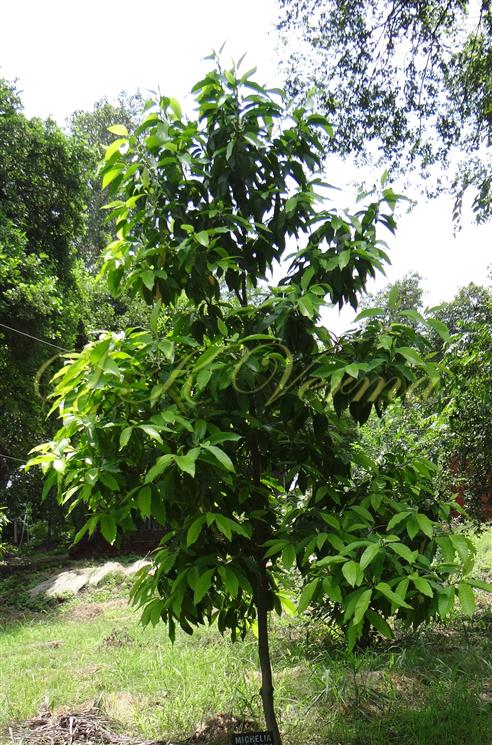
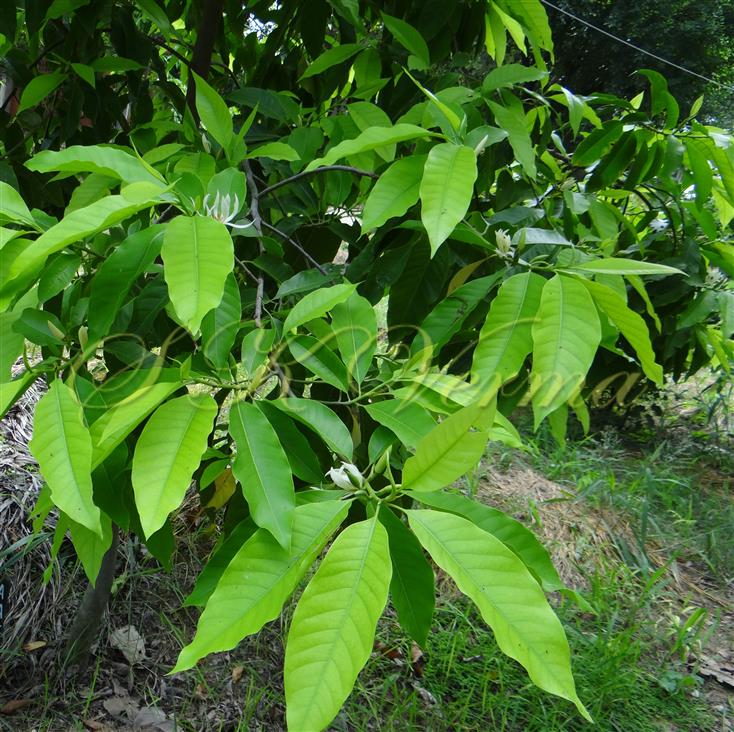
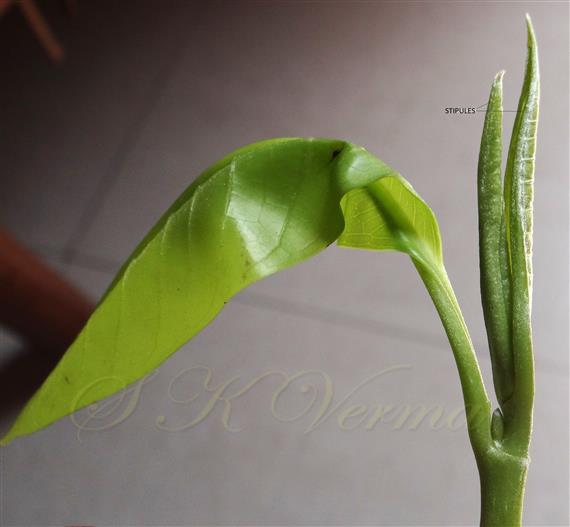
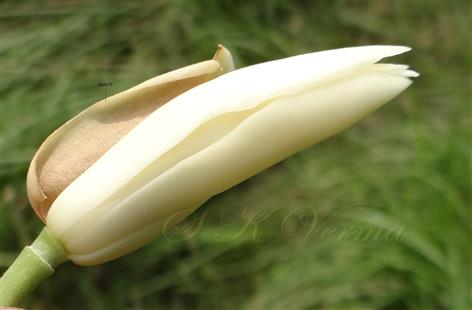
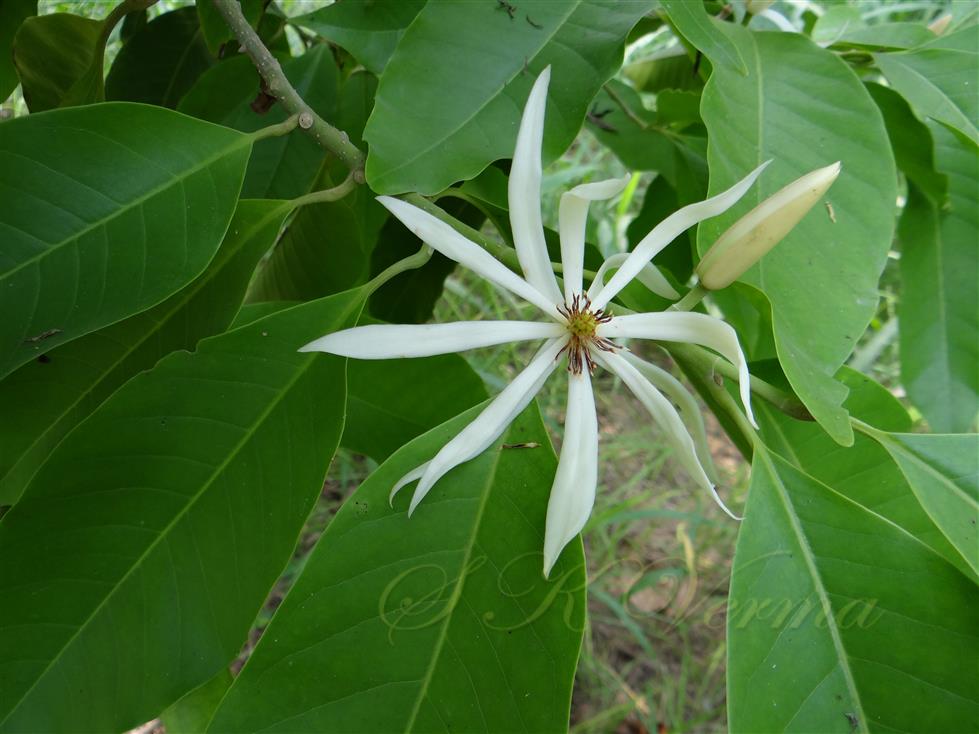
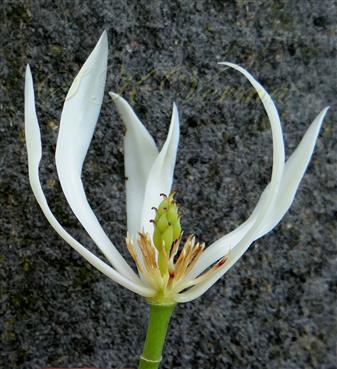
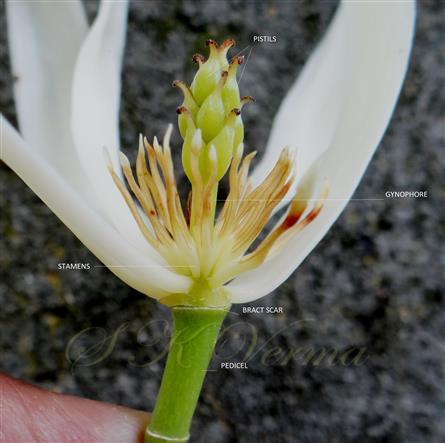
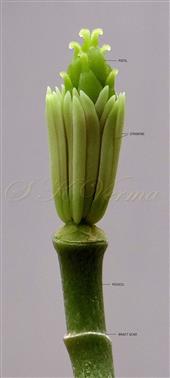
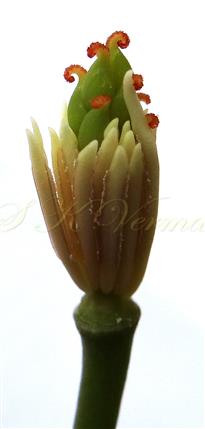
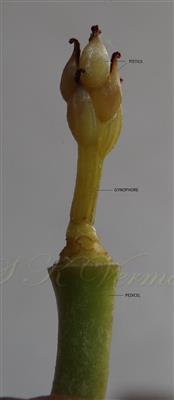
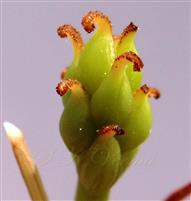
 bearing pistils.jpg)












 bearing pistils.jpg)